Difference between Nokia Lumia 925 and Sony Xperia ZL
Key Difference: Nokia has recently announced its new flagship phone the Nokia Lumia 925. The phone comes with a 4.5-inch AMOLED capacitive touch screen which takes up a good amount of space on the front, with the speaker and sensors on the top. The 4.5-inch capacitive screen has the same PureMotion HD+, ClearBlack that is found in Lumia 920. The Sony Xperia ZL is very similar to its counterpart the Xperia Z; however, it differs in some aspects and is also believed that it will be offered for a lower price compared to the Z. Sony has managed to make the ZL even smaller and more compact compared to the Z.
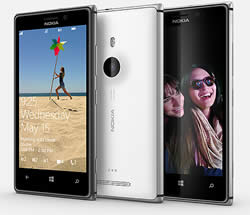 Nokia has recently announced its new flagship phone the Nokia Lumia 925. This phone is in lines with the other new Nokia Lumia 928, but differs from its cousin in many ways. The Nokia Lumia 925 was also known as “Catwalk” phone for a long time before it was officially announced. The company has maintained a similar design to its Lumia phones but has added a metal band. This is the first phone that will feature a mix of plastic and metal. However, the back is still made of polycarbonate plastic. The phone is made slim and light weight making it comfortable to hold. The phone’s frame is made of aluminum with only the back made of plastic. However, the back is non-removable so the battery is not easily accessible.
Nokia has recently announced its new flagship phone the Nokia Lumia 925. This phone is in lines with the other new Nokia Lumia 928, but differs from its cousin in many ways. The Nokia Lumia 925 was also known as “Catwalk” phone for a long time before it was officially announced. The company has maintained a similar design to its Lumia phones but has added a metal band. This is the first phone that will feature a mix of plastic and metal. However, the back is still made of polycarbonate plastic. The phone is made slim and light weight making it comfortable to hold. The phone’s frame is made of aluminum with only the back made of plastic. However, the back is non-removable so the battery is not easily accessible.
The device is available in black, white or grey, so don’t look for the bright colors that are expected of other Nokia phones. The phones comes with a 4.5-inch AMOLED capacitive touch screen which takes up a good amount of space on the front, with the speaker and sensors on the top and the three capacitive buttons (Home, Back and Menu) on the bottom. Similar to the other high-end Lumias, the top of the device holds audio jack, the microUSB port and the SIM slot. The left and the bottom side of the device is bare, while the right side has the volume rocker, the power button and the dedicated camera button making it a little too crowded.
The 4.5-inch capacitive screen has the same PureMotion HD+, ClearBlack that is found in Lumia 920. The ClearBlack technology plus the HD OLED screen offers sharp, clear images and also spectacular viewing in sunlight. The phones provides a good contrast and vibrant colors but the difference is not really that apparent when using day-to-day.
Under the hood, the phone is powered by Dual-core 1.5 GHz Krait Qualcomm MSM8960 Snapdragon, the same processor used in Lumia 920 and 928. The processor is fast and responsive, but lags when it comes to camera. The phone comes with Adreno 225 and 1 GB RAM, compared to the 2G found in its competitors. The phone comes with only 16 GB internal memory and does not offer users to extend it using an external card. The phone integrates the Windows Phone 8 OS, which works seamlessly. However, again similar to all other Windows Phones, the app stores lack many apps and still has yet to reach its potential.
The phone comes with an 8.7MP rear camera and a 1.3MP front camera. The camera comes with upgraded technology that uses a 1/3'' sensor size to take more high-res photos. The camera also comes with Nokia’s Smart Camera technology that allows taking 10 photos at once, which can then be altered to create the perfect photo. This is similar to the Zoe technology found on HTC One that takes mini videos along with photos. The company has also added an additional lens on the five-lens that allows taking much better photos. Nokia also boasts about its low-light imaging technology that allows users to take excellent photos in low-lighting conditions. The imaging technology is quite superior and does take excellent images with less blur. However, the camera shutter is quite slow which requires the user to hold the phone with a steady hand to eliminate motion blur.
The company also has removed the built-in wireless feature to cut down on the weight, but has added it as an option by purchasing the wireless cover. The phone comes with a non-removable Li-Ion 2000 mAh battery that allows the phone to go longer periods of time without requiring charging. The phone also comes with a few nifty features that make it stand out. The new phone is slick, thin and has decent features. It could just be phone that turns the tide in favor of Nokia Windows Phone.
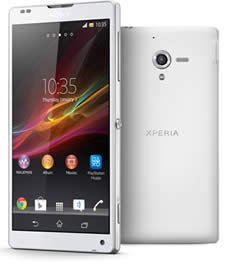 Xperia Z and Xperia ZL are two phones that Sony has launched in competition to Samsung Galaxy S3 and iPhone 5. These two phones are similar in design and features, with only slight alterations to the ZL. These phones are Sony’s plan to put itself back on the smartphone market. Sony announced the phones at the 2013 CES in January.
Xperia Z and Xperia ZL are two phones that Sony has launched in competition to Samsung Galaxy S3 and iPhone 5. These two phones are similar in design and features, with only slight alterations to the ZL. These phones are Sony’s plan to put itself back on the smartphone market. Sony announced the phones at the 2013 CES in January.
The Sony Xperia ZL is very similar to its counterpart the Xperia Z; however, it differs in some aspects and is also believed that it will be offered for a lower price compared to the Z. Sony has managed to make the ZL even smaller and more compact compared to the Z. The ZL maintains the 5-inch display in the dimensions 131.6 x 69.3 x 9.8 mm. The ZL offers the same processor, internal storage capacity, RAM and software. The ZL is also available with 4.1 Jelly upgradeable to v4.2. The ZL is also slightly heavier than the Z but it does not make that big of a dent on the design.
The major difference is ZL does not offer the dust and water resistance that is boasted by the Z. However, it does offer shatter-proof sheet and scratch-resistance glass on the front. The back isn’t the glass that is available in the Z but has a matte or textured finish, making it easier and more comfortable to hold. The ZL also has slight differences in button and SIM slow placement. The SIM and microSD card slots are placed on the bottom lower of the back panel, while in the Z the slots are placed above the power button on the right hand side. The ZL also offers a dedicated camera button which is not available in its big brother. The ZL also lacks contact points which are available with the Z. The contact points allow the phone to be connected to a charging dock that is sold separately. The placement of the front camera also differs. The front camera in the Z was located on left-hand corner, while in the ZL it is located in the right-hand corner. However, this does not make a difference when using the phone for video conferencing. Two new features that the ZL boasts is infrared/IrDA functionality and one-touch mirroring. The IR feature allows the phone to be used as a remote with any device that supports IR and one-touch mirroring allows the phone to send, receive and play audio and video files by touching another device that supports the feature. The ZL has yet to be launched and the price has also not been fixed for the device.
The information for the detailed table about the two phones has been taken from the Nokia website, Sony Mobile website and GSMArena.com.
|
|
Nokia Lumia 925 |
Xperia ZL |
|
Launch Date |
June 2013 |
April 2013 |
|
Company |
Nokia |
Sony Mobile |
|
Size |
129 x 70.6 x 8.5 mm |
131.6 x 69.3 x 9.8 mm |
|
Display |
4.5 inches AMOLED capacitive touchscreen |
1920x1080 pixels, (~441 ppi pixel density) |
|
Screen |
768 x 1280 pixels (~334 ppi pixel density), 16M colors |
5 inch scratch-resistant TFT |
|
Protection |
Corning Gorilla Glass 2 |
Shatter-proof sheet on scratch-resistant glass. |
|
Weight |
139 grams |
151 g (5.33 oz) |
|
2G Network |
GSM 850 / 900 / 1800 / 1900 |
GSM 850 / 900 / 1800 / 1900 - C6502, C6503, C6506 |
|
3G Network |
HSDPA 850 / 900 / 1900 / 2100 - RM-892, RM-893 HSDPA 850 / 900 / 1700 / 1900 / 2100 - RM-910 |
HSDPA 850 / 900 / 1700 / 1900 / 2100 - C6502, C6506 HSDPA 850 / 900 / 2100 - C6503 |
|
4G Network |
LTE 800 / 900 / 1800 / 2100 / 2600 - RM-892 LTE 700 / 1700 / 2100 - RM-893 |
LTE 700 / 850 / 1700 / 1900 / 2100 - C6506 LTE 800 / 850 / 900 / 1800 / 2100 / 2600 - C6503 |
|
GUI |
Windows Phone 8 |
Timescape UI |
|
CPU speed |
Dual-core 1.5 GHz Krait |
1.5 GHz Quad-core Krait |
|
GPU |
Adreno 225 |
Adreno 320 |
|
OS |
Windows Phone 8 |
Android OS, v4.1.2 (Jelly Bean), planned upgrade to v4.2 (Jelly Bean) |
|
Chipset |
Qualcomm MSM8960 Snapdragon |
Qualcomm MDM9215M / APQ8064 |
|
RAM |
1 GB |
2GB |
|
SIM Size |
microSIM |
microSIM |
|
Internal Memory |
16 GB |
Up to 16 GB |
|
Expandable Memory |
N/A |
up to 32 GB |
|
Sensors |
Ambient light sensor, Accelerometer, Gyroscope, Proximity sensor, Magnetometer, Orientation sensor |
Accelerometer, gyro, proximity, compass |
|
Connectivity |
SIM, microUSB, 3.5mm audio, USB, Bluetooth, Wi-Fi, NFC, Wi-Fi Channel bonding |
4G LTE (100 mbps), GPS, GLONASS, USB, Bluetooth, NFC, Wi-Fi, DLNA and MHL. |
|
Data |
GPRS, EDGE, WLAN, Bluetooth, NFC and USB. |
GPRS, EDGE, WLAN, Bluetooth, NFC, Infrared port and USB |
|
Speed |
HSDPA, 42.2 Mbps; HSUPA, 5.76 Mbps; LTE, Cat3, 50 Mbps UL, 100 Mbps DL |
HSDPA, 42 Mbps; HSUPA, 5.76 Mbps; LTE, Cat3, 50 Mbps UL, 100 Mbps DL |
|
WLAN |
WLAN IEEE 802.11 a/b/g/n |
Wi-Fi 802.11 a/b/g/n, dual-band, Wi-Fi Direct, DLNA, Wi-Fi hotspot |
|
Bluetooth |
Bluetooth v3.0 with A2DP; Object Push profile (OPP) 1.1, Hands-free profile (HFP) 1.5, Advanced Audio Distribution Profile (A2DP) 1.2, Audio/Video Remote Control Profile (AVRCP) 1.4, Phone Book Access Profile (PBAP) 1.1 |
Bluetooth v4.0 with A2DP |
|
USB |
microUSB v2.0 |
microUSB v2.0. |
|
Primary Camera |
8.7 MP, 3264 x 2448 pixels |
13 megapixel Exmor RS camera with Auto focus and flash |
|
Secondary Camera |
1.3 MP, 720p@30fps |
2 MP 1080p Exmor R |
|
Video |
1080p@30fps, video stabilization |
HD video recording (1080p) at 30fps, continuous autofocus, video light, video stabilizer |
|
Camera Features |
|
|
|
Sound Enhancement |
Dolby Headphone sound enhancement Active noise cancellation with dedicated mic |
xLoud Experience |
|
Audio supported formats |
ASF, MP4, AAC, AMR, MP3, M4A, WMA, 3GP, 3G2 |
MP3/eAAC+/WMA/WAV/Flac |
|
Video supported formats |
MP4, WMV, AVI, 3GP, 3G2, M4V, MOV |
MP4/H.263/H.264/WMV |
|
Battery Capacity |
Non-removable Li-Ion 2000 mAh battery (BL-4YW) |
Non-removable 2370 mAh Li-Ion battery |
|
Talktime |
2G: 18 hours 3G: 12 hours |
Up to 10 hours |
|
Standby Time |
3G: 440 hours |
Up to 500 hours |
|
Available Colors |
Black, White, Gray |
Black, White, Red |
|
Messaging |
SMS (threaded view), MMS, Email, Push Email, IM |
SMS (threaded view), MMS, Email, IM, Push Email |
|
Browser |
HTML5 |
HTML5 |
|
Radio |
FM radio |
Stereo FM radio with RDS |
|
GPS |
GPS with A-GPS support and GLONASS |
Yes, with A-GPS support and GLONASS |
|
Java |
N/A |
Yes, via Java MIDP emulator |
|
Additional Features |
|
|
Image Courtesy: nokia.com, sonymobile.com





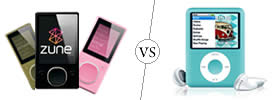
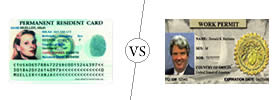
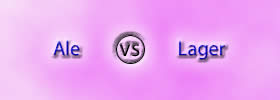

Add new comment